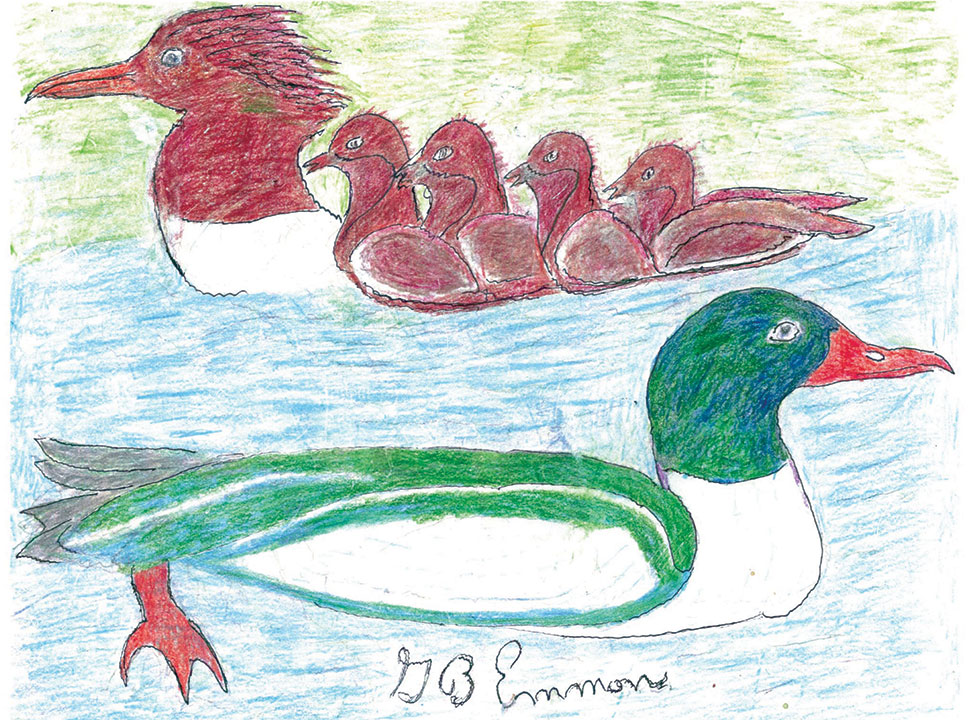For avid birdwatchers, few ducks are handsomer than the brightly colored male American merganser.
The boldly black and iridescent green crest on its head are strikingly contrasted above a pristine white body, which itself is offset by an orange bill and webbed feet. The female merganser, however, has been painted with earth-bound plumage shades by Mother Nature to be camouflaged to predators when sitting on a nest. As illustrated, she nevertheless is visibly crowned with a typical merganser head-shaped crest with a windswept trailing plumage flair behind her head. And like her freshwater habitat cousin, the northern loon, she will carry her newborn on her back when they frequently need a ride.
The merganser is a freshwater diving duck and is likely to appear now in ponds, lakes, and rivers not far from the coast, after the edges of ice have melted. It is an excellent swimmer and diver and, as competition to anglers, has learned to dive below the surface with the flash of a gun to duck out of sight and move unseen, using wings and webbed feet to power itself away and out of danger.
Sometimes they will take to the air, rising from the water using both wings and feet running or pattering on the surface before they get impetus enough to launch in the air. The offspring, like the similar wood duck, are precocial. After hatching out high in the cavity of a hollow tree, they are soon called by their mother to climb out and drop one by one to fall and bounce on the ground and land running toward the nearest water.
This large slender diving duck uses its saw-toothed bill to get a grip on fish and then gulp them down, and so is sometimes called a Sheldrake because it is at the top end of the freshwater food chain and also in brackish tidal flats. If there is a broken link somewhere in the food chain, the merganser will feel and show it.
The health of a food chain can be affected by toxic (poisonous) chemicals that get into the water due to soil erosion, runoff, or acid rain (created by pollution). Taking care of land, water, and air that wildlife shares with us means a healthy check-up for all. The carnivorous diet of small fish, water insects, mollusks, crustations, and a few frogs also makes mergansers vulnerable to lead poisoning from use of sinkers by fisherman, one of the most destructive chemicals in nature today.
The reappearance of the diversified, multicolored migratory merganser, both male and female, to energize our backyard birdwatching waters is a welcome arrival in spring and a reproductive promise of nesting and rearing another generation of our most decorative waterfowl plumage, reflected in motion across the passage of the season that brings them into view and appreciation of environmental awareness for future generations.
By George B. Emmons
